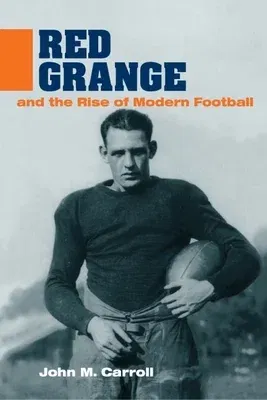John M Carroll
(Author)Red Grange and the Rise of Modern FootballPaperback, 1 May 2004

Qty
1
Turbo
Ships in 2 - 3 days
In Stock
Free Delivery
Cash on Delivery
15 Days
Free Returns
Secure Checkout

Part of Series
Sport and Society
Print Length
296 pages
Language
English
Publisher
University of Illinois Press
Date Published
1 May 2004
ISBN-10
0252071662
ISBN-13
9780252071669
Description
Product Details
Author:
Book Format:
Paperback
Country of Origin:
US
Date Published:
1 May 2004
Dimensions:
24.43 x
14.58 x
2.16 cm
Genre:
20th Century
ISBN-10:
0252071662
ISBN-13:
9780252071669
Language:
English
Location:
Urbana-Champaign, IL
Pages:
296
Publisher:
Series:
Weight:
489.88 gm